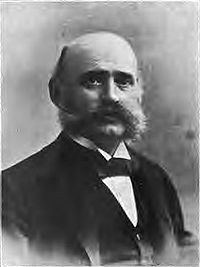Name Karl Weigert | ||
 | ||
Died August 5, 1904, Frankfurt, Germany Similar People Paul Ehrlich, Rudolf Virchow, Hans Christian Gram, Robert Koch, Almroth Wright | ||
Karl Weigert, Carl Weigert (19 March 1845 in Münsterberg in Silesia – 5 August 1904 in Frankfurt am Main) was a German Jewish pathologist.
He received his education at the universities of Berlin, Vienna, and Breslau, graduating in 1868. After having taken part in the Franco-Prussian war as assistant surgeon, he settled in Breslau, and for the following two years, was an assistant to Heinrich Waldeyer; from 1870 to 1874 to Hermann Lebert, and then to Julius Cohnheim, who he followed to the University of Leipzig in 1878. There he became an associate professor of pathology in 1879. In 1884 he was appointed professor of pathological anatomy at the Senkenbergsche Stiftung in Frankfurt am Main, and received the title of "Geheimer Medizinal-Rat" in 1899.
Weigert assisted Cohnheim in many of his researches, and wrote much on the staining of bacteria in microscopy. In 1884 he introduced a precise method for staining myelin sheaths. He is credited with the discovery of vascular tuberculosis, and was the first to demonstrate how tuberculous material could enter the bloodstream.
He contributed many essays to medical journals. Among his works are:
